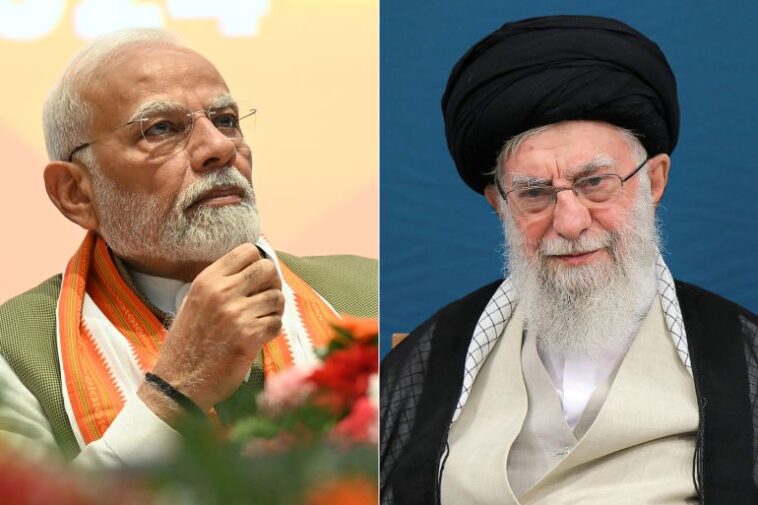Ali Khamenei, the Supreme Leader of Iran, invoked the ire of many the day following a provocative address. He published an AI-generated graphic on his social media profile, portraying Jews and Israeli soldiers in the guise of rodents. This artwork had an added layer of symbolism: the image depicted these ‘rats’ fleeing from Iranian missile attacks on an American vessel.
The use of such a stark and loaded visual metaphor aligns with the confrontational tone Khamenei adopted in his speech on July 16. During this address, he characterized the Israeli administration as a ‘cancer’ and labeled the nation ‘America’s feverish hound’.
After long absent from the public eye, presumably taking refuge in a bunker, Khamenei took the podium for only the second time to make a bold statement. He argued his case that Israel had been forced to seek aid from the U.S. The Iranian leader theorized that the underlying cause was Israel’s inability to counter the Islamic Republic on its own.
His oratory was severe, suggesting that he believes Israel was brought to its knees before the U.S. He justified this view by saying, ‘If (Israel) hadn’t been in such a desperate state, if it hadn’t found itself broken and helpless, if it hadn’t required assistance…they wouldn’t have pleaded for aid from the United States’, he asserted.
In a continuous show of daring, Khamenei has not refrained from posting a series of similar images during these tumultuous times. Previously, these have included visuals of missiles plummeting towards a cranium marked with the Star of David, missiles toppling over a Statue of Liberty bearing Trump’s face, and an Israeli-American vessel sinking in a fiery explosion.
Just last week, Mehdi Mohammadi, an adviser to Mohammad-Bagher Ghalibaf, shared a post on Instagram depicting the geographical layout of Israel under the threat of two prominent mushroom clouds. This positioning was anticipated as an ominous symbol of nuclear detonations.
However, shortly after its posting, Mohammadi removed the image. He subsequently offered an explanation for this course of action – an indication that the image caused enough controversy to warrant taking it down.
The Iranian government has garnered attention previously for its deployment of contentious imagery. Both Jews and the Israeli state have been the subjects of such portrayals. These visuals have stirred up controversy and drawn criticism from numerous quarters for their inflammatory nature.
One such instance of controversial imagery appropriation took place recently in Tehran’s local art scene. An art gallery in the city decided to feature a new collection. The work selected was a compilation of cartoons and caricatures depicting the U.S. and Israel.
These figures were distinctive, detail-conscious, and often contained iconography perceived to be antisemitic. The images in this collection were inherently provocative and worsened tensions between the involved nations.
These corrosive acts of both speech and art have caused tension and drawn international ire. It’s a concerning trend that points out how images and speeches are used as potent tools in political warfare.
Images that incite fear, vilify, and even call for violence often raise pointed questions about the intended motives and the consequences of such expressions. Whether such freedom of expression should be defended or condemned becomes a difficult dilemma, embedding itself firmly in the political landscape.
Although art, in all its forms, has played a pivotal role in expressing dissent and critiquing systems of power throughout history, the ethics of promoting violent and discriminatory imagery remains a contentious issue.
Political cartoons and caricatures have long been used as a powerful instrument of social commentary, satire, and criticism. Yet, they can also serve as a vehicle to propagate hate speech and further exacerbate tensions between countries.
In conclusion, expressions that aim to belittle, stereotype, or engender hatred towards a group or an individual raises uncomfortable questions about the boundaries of free expression. These instances show that public figures, and governments, wield significant influence in shaping narratives through visual cues, symbolic representations, and public addresses.
Resultantly, the current situation necessitates a more measured and responsible approach towards the use of symbolism and metaphor, in both speech and imagery. Meaningful dialogue, driven by empathy and understanding, could be the much-needed antidote to such incendiary practices.

